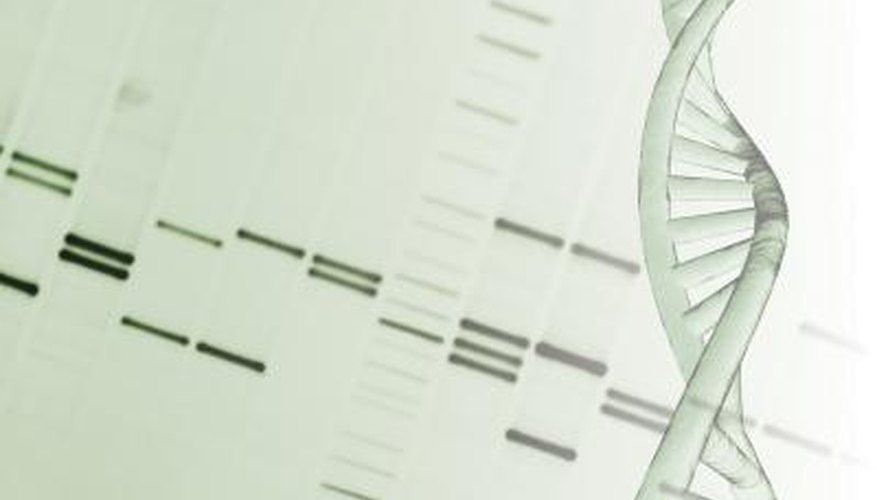DNA fingerprinting is a technological method to identify specific organisms or individual people. A common tool used for this method is gel electrophoresis. As with any tool, there are always advantages and disadvantages in using it. Regardless of the method's pros and cons, gel electrophoresis still has played a valuable research role in scientific laboratories.
Cost
Running a gel electrophoresis is a cost-effective tool for DNA fingerprinting. There are a variety of sizes to choose from depending on the amount of subject samples and the relative frequency the machine is being run. Some machines are about the size of a paperback novel and others are the size of a table. The medium used for the gel is another cost-effective item. A common gel type is the agarose gel, which is made mostly of a buffer solution. This solution is needed to conduct the electricity from one side to the other, and it's usually recycled for another electrophoresis.
- Running a gel electrophoresis is a cost-effective tool for DNA fingerprinting.
- A common gel type is the agarose gel, which is made mostly of a buffer solution.
Ease of Use
College students will make and run their own gel electrophoresis in a typical biology course. Since it's one of the commonly used apparatuses used in a biology lab, it is also one of the simplest to use. A gel is made using a specified formula, which can be calculated ahead of time. After loading the samples, the apparatus is covered with a safety shield, electrodes are put into place and the electrical current is passed through the machine. The only complicated part of the operation is to know when to stop the machine. Some apparatuses have timers to shut off the machine before the samples run off the gel.
- College students will make and run their own gel electrophoresis in a typical biology course.
- After loading the samples, the apparatus is covered with a safety shield, electrodes are put into place and the electrical current is passed through the machine.
Sample Recovery
An agarose gel has the advantages of being able to recover the DNA sample after the test is run. The gel itself does not denature the DNA to the point that it is unusable. In DNA fingerprinting, a gel electrophoresis can be done to separate the fragments. The fragments can then be cut and isolated to run another test. However, in some instances the DNA fragments can melt due to the current. In this instance, the sample is able to be recovered and the placement of the DNA fragment in the gel may be altered from where it really should be.
- An agarose gel has the advantages of being able to recover the DNA sample after the test is run.
Fragments
One disadvantage in using a gel electrophoresis for DNA fingerprinting is that the fragments have to be made in a specific manner. Restriction enzymes are proteins that will cut a strand of DNA in a very specific recognition site, a specific coding sequence. There are plenty of restriction enzymes on the market, but they will only cut where there is a recognition site. This means that there could or could not be a specific site from one person to the next. In this respect, the tool of DNA fingerprinting from gel electrophoresis is only as good as the restriction enzyme used. As more enzymes are used, more fragments are produced, which give more information for the analysis.
- One disadvantage in using a gel electrophoresis for DNA fingerprinting is that the fragments have to be made in a specific manner.
